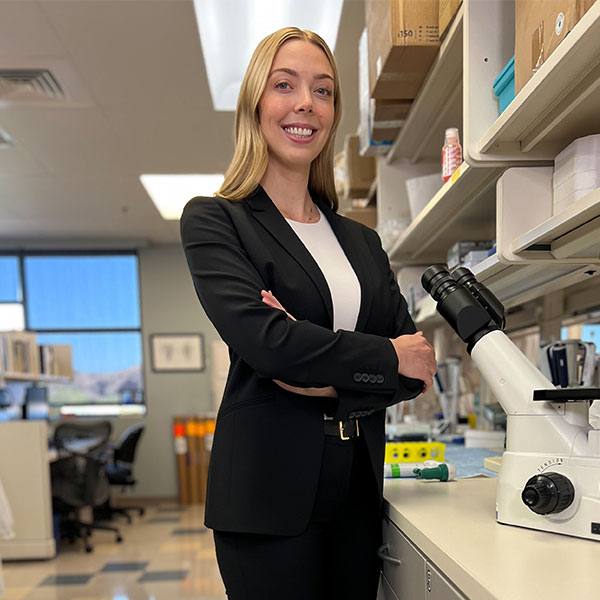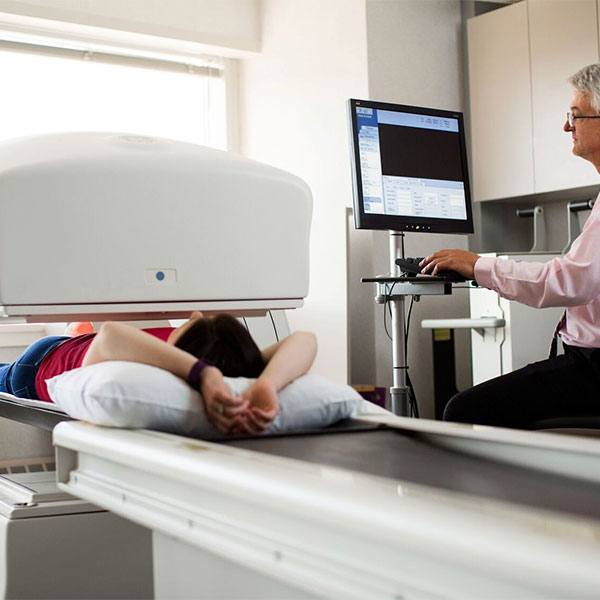-
Education
Science Saturday: Brainstorming on epilepsy
Epilepsy strikes without warning, when an electrical storm sweeps across the brain. Storm-chasing teams of researchers have adopted computational techniques to pinpoint and predict seizure activity.
Where exactly does a seizure originate? How can the onset of a seizure be predicted? The emerging answers to these mysteries have two things in common: epilepsy, one of the most common neurological disorders, and Brent Berry, M.D., Ph.D.
Now a resident in neurology, Dr. Berry ultimately wants to develop the next generation of therapies for brain disorders — implantable devices that monitor and intelligently administer neuromodulation (electrical stimulation that alters nerve activity) as therapy for hard-to-treat neurological conditions. He focuses on epilepsy but sees potential to improve outcomes for patients with other neurological and psychiatric disorders.
After majoring in biochemistry, Berry was accepted into Mayo Clinic School of Medicine, where he developed an interest in epilepsy.
“I was fascinated with how epilepsy works and how debilitating it is,” Dr. Berry says. “There’s a lot we don’t understand about epilepsy. It’s a big frontier.”
To chart that frontier, Dr. Berry put his residency on hold after completing medical school to pursue a doctorate in biomedical engineering and physiology at Mayo Clinic Graduate School of Biomedical Sciences. He studied the brain's intricate electrical circuitry and the faulty processes that produce seizures. He learned how to use sensors to measure the brain’s electrophysiological activity and higher math in tandem with software to analyze and model brain function. Most of all, Dr. Berry learned teamwork is the quickest route to medical advances.
Brainstorming for Medical Advances
“The nature of science is turning more collaborative,” Dr. Berry says. “No one person or lab can have all the skills needed to solve the big challenges in neuroscience. It’s going to take the combined resources of universities, labs and companies to make breakthroughs.”
Dr. Berry chose to work in Mayo Systems Electrophysiology Lab, which studies how the brain works and how it goes wrong. As his mentor, he chose Gregory Worrell, M.D., Ph.D., a neurologist specializing in epilepsy and the lab’s co-leader.
“Here at Mayo, research is a team sport,” Dr. Worrell says. “Brent’s nature is to be collaborative and interactive, so he was involved in a large number of projects.”
Each of Dr. Berry’s main projects has its own roster of specialized clinicians and researchers from Mayo Clinic and other organizations. Driven by team spirit, Dr. Berry has contributed to about 25 publications and patents during his young career as a physician-scientist.
When Brain Meets Machine
The possibilities of a brain-machine interface fascinate Dr. Berry.
“There’s been a great deal of progress over the past 10 years in artificial intelligence — making control systems that think for themselves, like self-driving cars,” he says. “There are so many new tools that are being applied to neuroscience. It’s the right time to be a scientist researching in this field.”
Instead of trying to replicate the circuitry and processing of a normal brain, Dr. Berry has turned to machine learning, using computers to improve predictions, decisions and actions through experience. Sophisticated algorithms tell a computer to follow certain rules for solving a problem and for achieving better performance over time. The computer then analyzes massive amounts of data to identify structures, relationships among variables, and other patterns that help it learn to interpret new data.
By the time he completed his doctorate in 2017, Dr. Berry’s commitment to team science and machine learning contributed to two important advances on epilepsy.
Mapping Seizure Onset
Medication cannot prevent all seizures in about one out of three epilepsy patients. For them, brain surgery is the standard option. They go through a process designed to trace seizures to a single focal point. In the final step, a surgeon removes a portion of the patient’s skull, places a set of electrodes on or within the brain, and replaces the bone. Then round-the-clock monitoring by intracranial electroencephalography (iEEG) records the electrical activity of neurons in the brain. Most patients have a seizure within four weeks and undergo a second operation to remove the unhealthy brain tissue.
To pinpoint seizure onset, neurologists traditionally analyze iEEG readings during a seizure. Each electrode records an energy wave, and seizures show up as sudden spikes and rapidly repeating waves. However, epilepsy also produces abnormal electrical activity that may not produce any symptoms between seizures.
Dr. Berry and a team developed computational techniques for mapping abnormal brain tissue through electrophysiological biomarkers — points of abnormal electrical activity, including spikes and rapidly repeating waves. In a comparison involving 82 Mayo Clinic patients, Dr. Berry and a team found that automated analysis of non-seizure data could locate the seizure onset within 48 minutes and could do so more accurately by tracking a third biomarker, a synchronized increase in frequency by two or more waves.
Mapping seizure-generating tissue faster and more accurately — with no need for a seizure — would revolutionize epilepsy surgery, enabling location and removal of seizure-causing tissue in one procedure, Dr. Berry says.
“It could save hundreds of thousands of dollars, cutting costs of iEEG monitoring by an estimated 50 to 80 percent, and avoid a stressful experience for each patient,” Dr. Berry says, adding that regulatory approval is likely still five to 10 years away.
Predicting the Storm
Epilepsy patients take medication daily even though seizures strike intermittently. Being able to forecast a seizure would help patients manage their activities and medications and provide a stepping stone to halting seizures before they start. In a 2017 animal study, the team used iEEG recordings and computer algorithms to identify measurable changes in three neurophysiologic biomarkers that indicated an increased probability of seizure. Because these subtle changes preceded seizures, the results suggest the potential for a machine-learning approach to predicting seizures on a patient-by-patient basis.
Dr. Berry now is part of a project led by Dr. Worrell working to develop a device that combines seizure-predicting technology with neuromodulation in hopes of quieting brain-storms.
-Jon Holten







